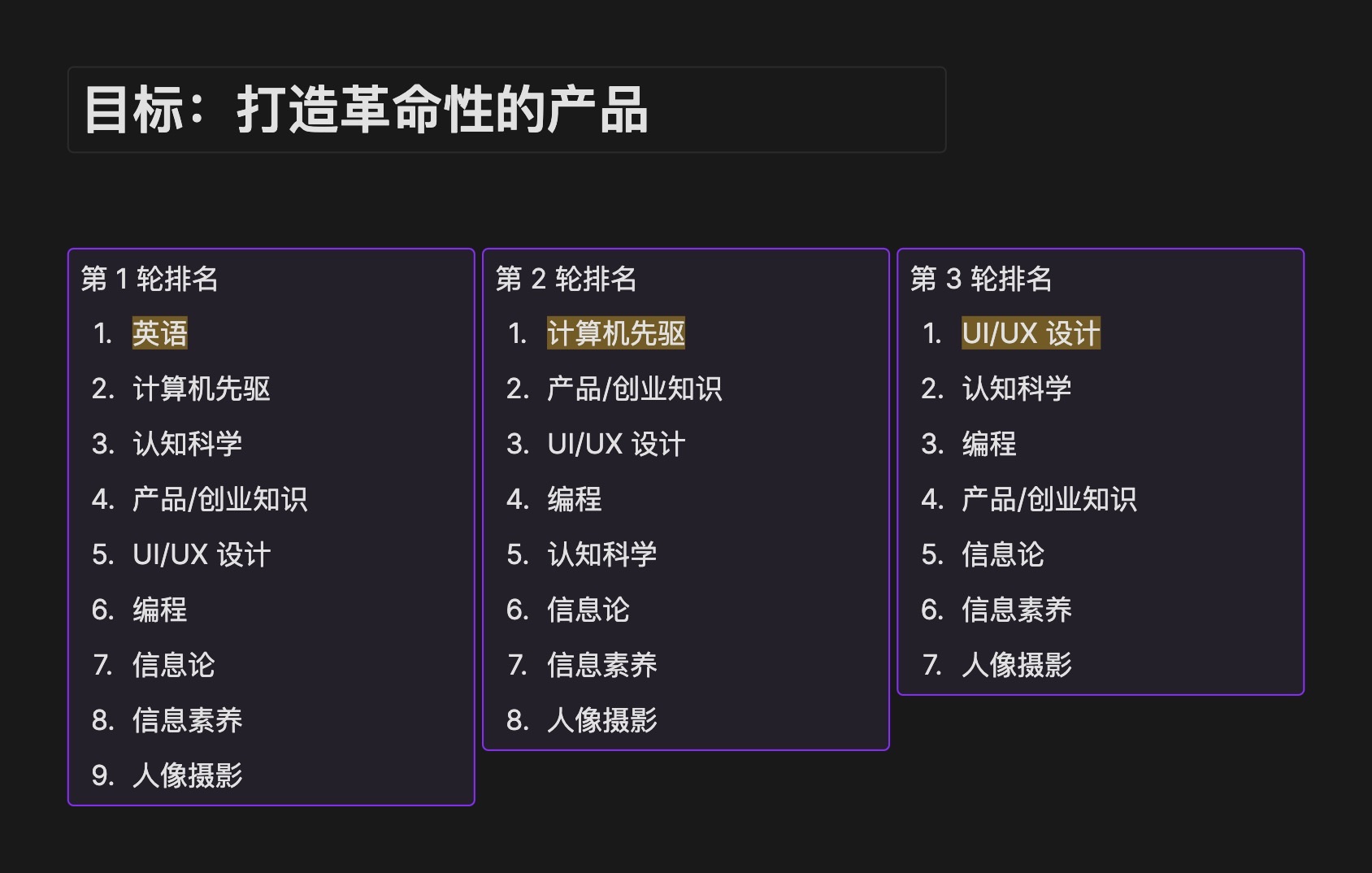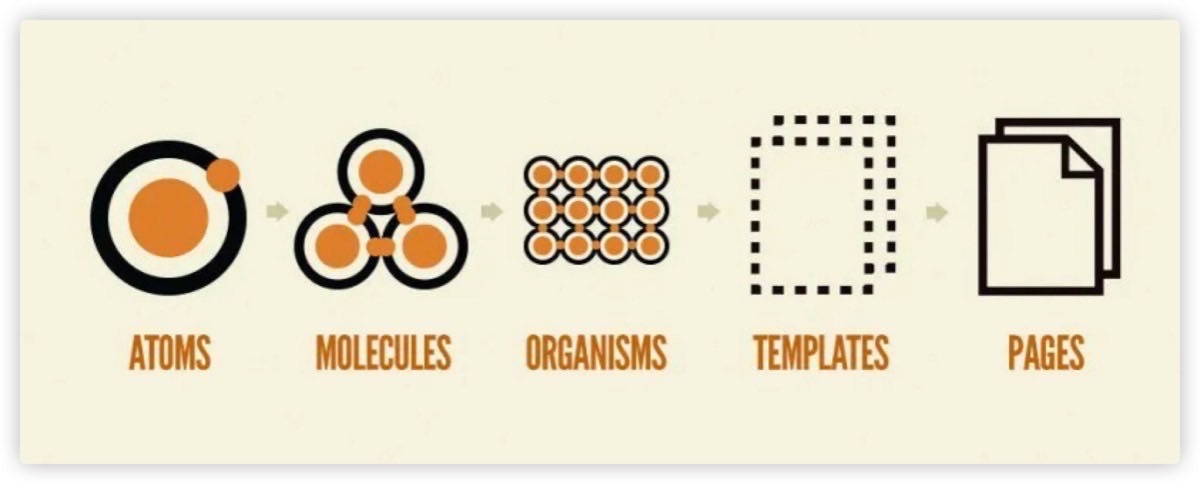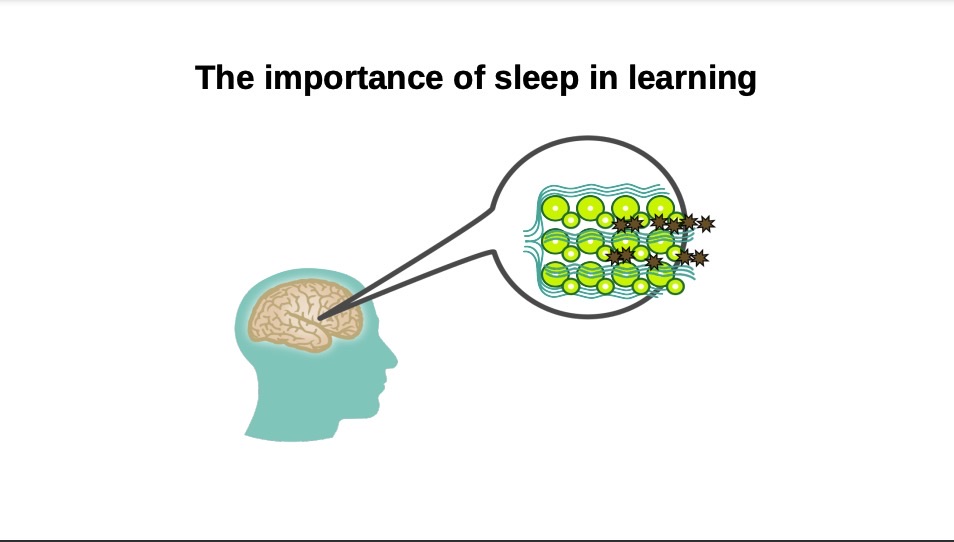Generative Learning Methods
Wittrock's generative learning theory suggests that learning is not a passive reception of input information, but rather a process of selectively attending to certain information and actively constructing meaning between pieces of information.
Main processes of generative learning:
-
Selection Phase
-
Meaning Construction Phase
-
Construction Completion Phase
In the paper "Eight Generative Learning Strategies", the authors introduce several strategies. I'll share my practical approach below.
Selection
Learners, influenced by their long-term memory experiences and knowledge structures, select what they want to learn
When selecting learning objectives, I consider the following aspects.
PARA
PARA is a knowledge/information management method where 'A' stands for Area, meaning that your collected information and knowledge should focus on a few key domains. This helps maintain focus and allows knowledge to cluster more easily, making it easier for knowledge points to interconnect, which is helpful for the meaning construction phase.
As a software industry professional, I believe that creating products is like cooking - you need to understand both the ingredients and the diners. Therefore, I focus my domains on cognitive science (understanding people), technology (understanding ingredients), and design (cooking methods).
Information Orthogonality
Information orthogonality is a concept from information theory suggesting that when evaluating the value of information, it shouldn't be assessed in isolation but rather alongside surrounding information. For example, in dining, while vegetables are good, if today's menu already includes many vegetables, adding some meat might be more appropriate.

In "40 Lectures on Information Theory," Dr. Wu Jun introduces specific methods for utilizing information orthogonality when setting goals:
-
First round ranking: List learning projects by priority
-
Second round ranking: Rank again by priority, but this time consider the value of each item when combined with the top item from the first round, also considering its priority in relation to your existing knowledge/skills
-
Proceed with third round ranking

My career goal is to create a revolutionary product, and my learning is directed toward this goal.
First, I listed all the things I wanted to learn and found that English was most important, as much valuable knowledge is written in English. Regardless of what I'm learning, improving my ability to access English information is crucial.
The thinking of computer pioneers has provided me with many inspirations. They described an exciting future for computers that remains unrealized. If my English level allows relatively barrier-free reading, I most want to further understand their thoughts, so I ranked this first in the second round.
In the third round ranking, I struggled between design, cognitive science, programming, and entrepreneurship knowledge, realizing I hadn't clearly decided whether to join a team as a designer or lead a team as an entrepreneur. I ultimately chose to join a team, as that would bring me closer to my ideal product. Learning from computer pioneers' thoughts can help me understand the broad direction of products, and then the most important thing is how to create products along this direction, so I chose UI/UX design skills that are more practical in a team setting.
Practice Ground
Having long-term goals isn't enough; learning project selection must also consider the present. "Can the knowledge I want to learn help me do better right now?" This is one of my most important criteria for filtering learning content. Without a practice ground, several problems arise:
-
Reduced motivation - everything requires motivation, and if the learning content doesn't help me in the near term, motivation greatly decreases
-
Lack of feedback - learning content cannot be tested in practice, making it difficult to know how well you're learning and optimize learning pace/methods
-
Knowledge is more easily forgotten - following the "use it or lose it" principle, knowledge without practice is easily forgotten, wasting investment
When learning English, I find articles suitable for my level to read; after learning computer pioneers' thoughts, I apply them in building products like Scouter. These are ways I create practice grounds for myself.
Other methods include choosing learning projects based on work requirements rather than interest, and learning knowledge related to oneself - all of these create practice grounds, but I won't elaborate further here.
Setting Learning Approach Goals
"Motivation Psychology" suggests that goals are influenced by 4 attributes:
-
Learning: Improving ability
-
Performance: Proving ability
-
Approach: Moving toward good results
-
Avoidance: Avoiding bad results
Research shows that choosing learning + approach-type goals is most beneficial, such as setting goals to improve English reading ability rather than avoiding failing tests.
Constructing Meaning
After selecting learning goals, you need to further construct the meaning of learning materials. Meaning construction can be divided into 2 steps:
-
Complete internal understanding
-
Establish external connections
Complete Internal Understanding
Restate Rather Than Copy
The illusion of competence is a phenomenon where you think you understand something but actually haven't mastered it. When facing learning materials, simply underlining or copying text to notes without further processing can lead to this illusion. Restating is one solution - describing learned knowledge in your own words can improve understanding.
Take Titles Seriously
Note titles are also important. The title is a summary of learning materials, and whether you can summarize effectively tests your understanding level. Additionally, concise titles are easy for other notes/articles to reference.
Utilize Spatial Thinking
A book or topic contains extensive knowledge. For deep understanding, you can follow the atomic principle of card notes to write each knowledge point on separate cards, then place these cards on a whiteboard to consider their relationships.
The process of converting textual information into visual representation can effectively promote learners' cognitive processing, namely selecting relevant information from text, organizing information representation in visual form, and integrating existing knowledge to explain the meaning of information and its connection with visuals. —Eight Generative Learning Strategies_Logan Fiorella

Spatial thinking is particularly effective for learning complex knowledge:
Learning materials have high complexity or spatial extensibility, or learners cannot internalize relevant spatial connections on their own, or learners cannot obtain ready-made suitable external spatial representations. This shows that spatial generative strategies are particularly effective when learners are learning complex spatial concepts, such as in STEM —Eight Generative Learning Strategies_Logan Fiorella
Establish External Connections
Establishing external connections means thinking about new knowledge alongside old knowledge. On one hand, association with related knowledge can enhance knowledge retrieval strength, making learned knowledge easier to apply in the future. On the other hand, comparing different knowledge often sparks creativity.
For example, the famous atomic design in the design field was inspired by chemistry. Just as matter is composed of atoms forming molecules then combining into organic compounds, Brad Frost applied atomic thinking to organize design systems, which has been widely adopted in the design field. The concept of psychic entropy in psychology also borrowed from the physics concept of entropy.

Association of Key Points
As mentioned earlier about using whiteboards to think about relationships between knowledge points, at this stage, I associate related concepts from old knowledge, similarly dragging them onto the whiteboard for connecting and annotating.
Association of key points refers to learners actively associating lecture key points, establishing connections between them, thereby creating mental representations. (Leopold and Mayer, 2015)
For example, after understanding that "generative learning" is effective, I began thinking about why it's effective and found that various learning strategies involve different ways of processing learning materials. The concept of processing depth I previously learned in cognitive psychology mentioned that deeper information processing leads to better retention in long-term memory, which perfectly explains the principle of "generative learning". This completed a connection with external knowledge, not only deepening understanding of new knowledge but also reviewing old knowledge.

Choosing Learning Strategies
To choose appropriate learning strategies, you need to consider both the learner's existing knowledge and the characteristics of the learning material (Wittrock, 1989)
Spatial strategies are more effective when learning materials are complex and have spatial extensibility (Stieff et al., 2014). Conversely, for materials with linear structures like narratives, restating in your own words is more effective than spatial strategies.
Of course, learning strategies can be mixed. For example, you can break down complex learning materials into several small knowledge points, use restatement to complete internal understanding, then use spatial strategies to sort out relationships between knowledge points, and finally add external knowledge for association.
Completing Construction
Feynman Learning
Feynman learning is a method of learning through teaching, attempting to teach concepts you've learned to others. This process helps consolidate learning content, and if you find you can't explain something clearly, you can go back and review.
I divide this "teaching" into light and heavy types.
Previously, I would share learned knowledge with colleagues during meals, which not only achieved the effects mentioned above, but their feedback often gave me new insights. After leaving my job, this light sharing transformed into posting on Twitter. Heavy "teaching" involves writing articles, and within teams, sharing with everyone through presentations.
Learning Doesn't Always Require Studying
We often talk about balancing work and rest, so we should rest more and exercise more. I originally thought these were just ways to recover outside of learning, but surprisingly, they directly affect learning outcomes.
Sleep
Many people have probably experienced that dizzy, headache feeling when lacking sleep. During sleep, the brain can remove toxins, thus avoiding difficulty concentrating during learning and work.

Sleep allows the prefrontal cortex (responsible for processing short-term memory) to relax, allowing the rest of the brain to more easily chunk and connect information, which is beneficial for both knowledge absorption and inspiration.

Exercise
Adequate activity aids learning. Experiments studied confined white rats versus those with larger living spaces allowing relatively free movement and interaction with other rats, finding that rats with more space had more neuronal growth, which aids learning. If sufficient space isn't available, exercise can also stimulate neuronal generation.
Conclusion
The generative learning process includes selecting learning content, understanding learning content and associating it with external knowledge for expansion, and finally completing knowledge construction through output. The core concept is that learning is not passive input but an active construction process, so learning should involve actively filtering information sources and purposeful learning rather than passive reception.
I hope everyone can find joy in learning and gain something valuable 🐣.
References
-
Logan Fiorella, Richard E. Mayer, Lu Qi, et al. Eight Generative Learning Strategies[J]. Digital Education, 2016,2(03):86-92+2.
-
Tan Jingde, Chen Qing, Zhang Yanli. Analysis of Epistemological Characteristics of Wittrock's Generative Learning Theory and Its Guidance for Instructional Design[J]. E-education Research, 2009,(08):